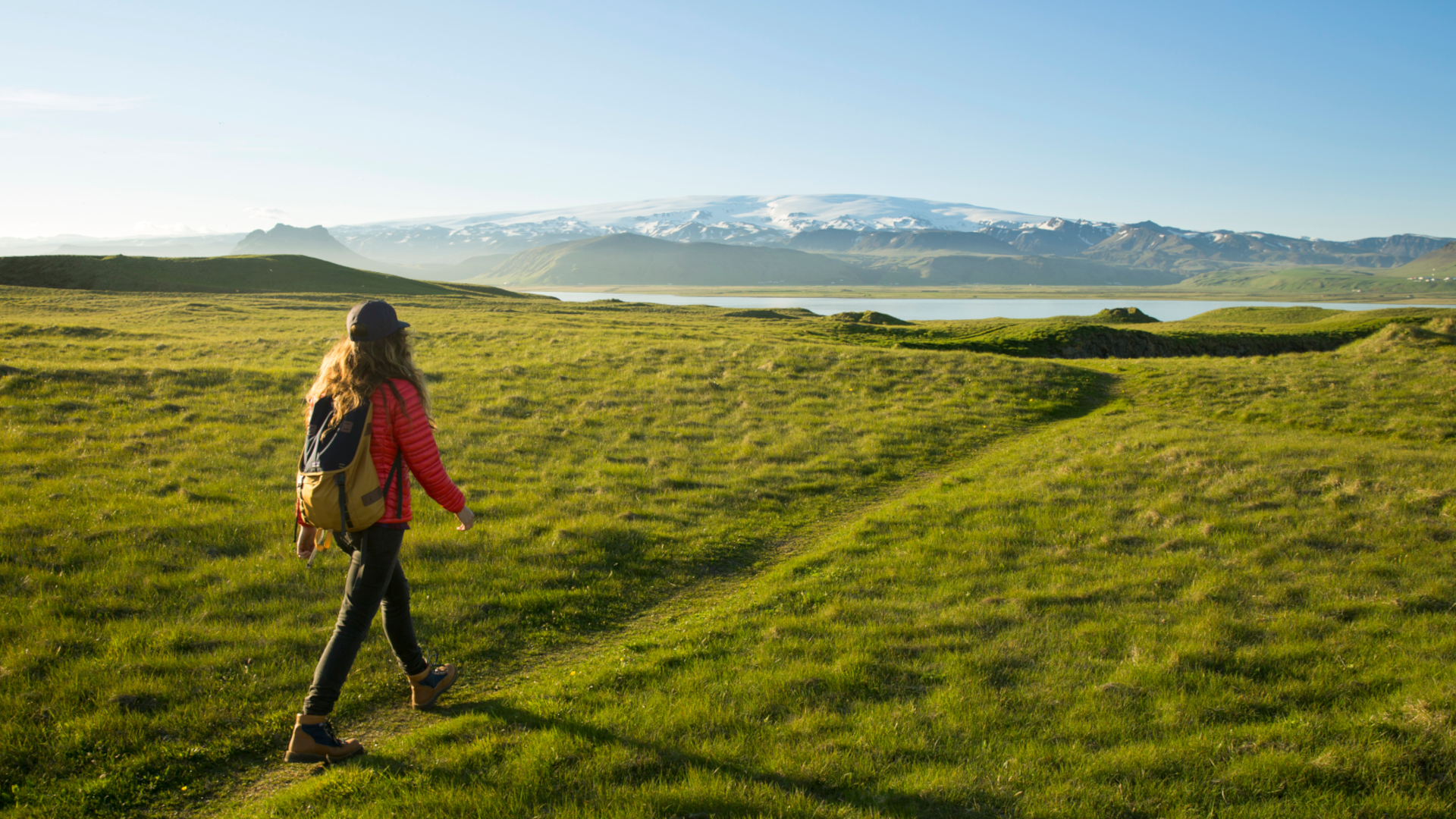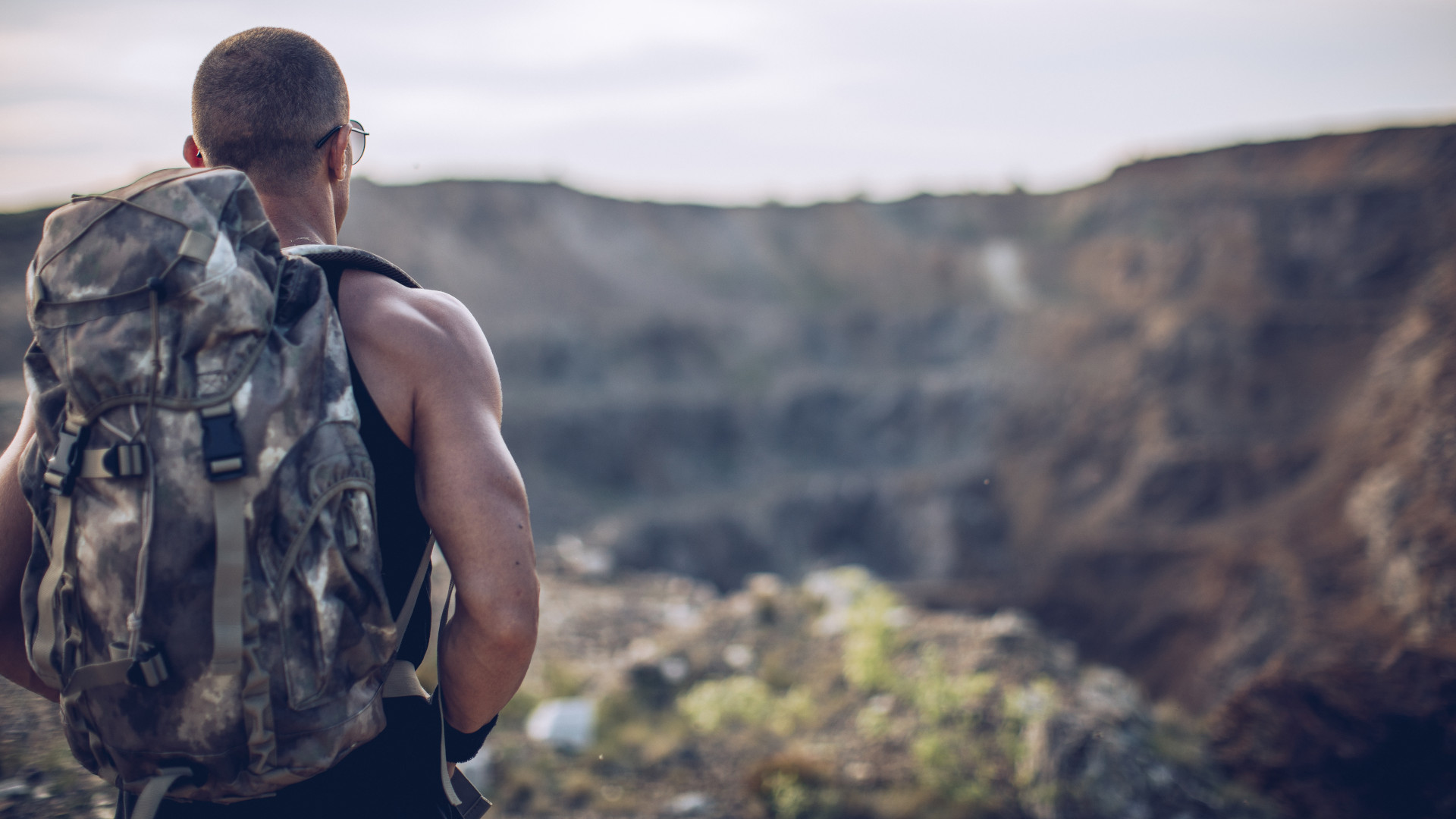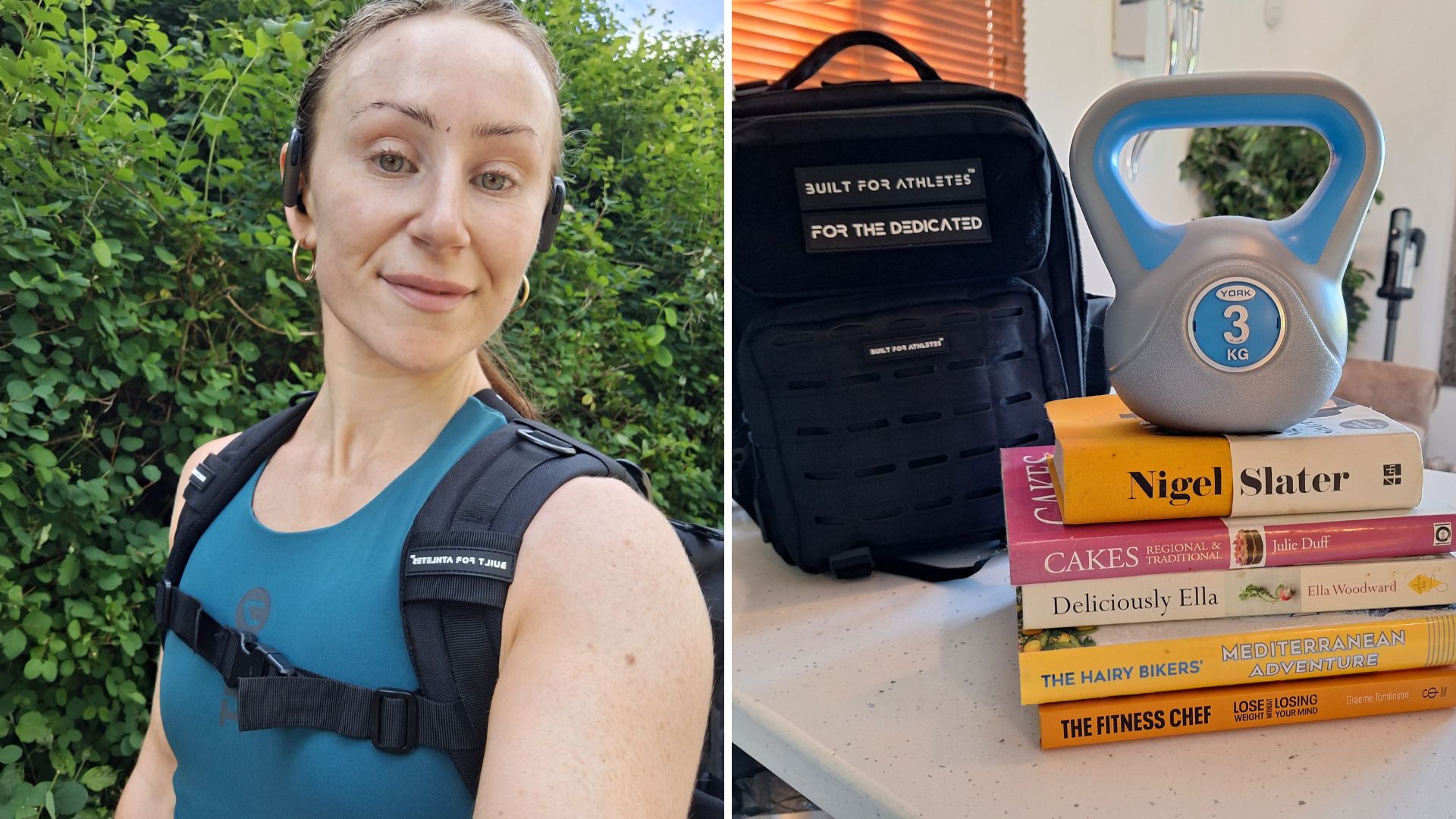
Rucking may not be anything new (it’s used in military training and is where you walk or march wearing a weighted rucksack) but, recently, my social media feeds have been full of people donning a rucksack and heading into the great outdoors.
We all know that walking in general is great for our body and mind, but by consciously adding some weight onto your back, your cardio efforts are instantly upgraded and your muscles get an extra firing.
After seeing multiple videos pop up about the ‘underrated benefits’ of rucking, I decided it was time to see what all the fuss was about. I called upon the expertise of Jonny Pain, ex-military and an NSCA Certified Strength and Conditioning Specialist, who put together a simple rucking workout for me. Here’s how I got on when I swapped my weekly run for rucking.
Why you should try rucking
“Rucking significantly strengthens and conditions the muscles in your legs, glutes, and helps to maintain and correct a healthy posture,” explains Jonny. “The increased intensity from the added weight leads to a higher calorie burn compared to conventional walking, aiding weight loss. But it also elevates your heart rate, boosting your cardiovascular fitness and promoting heart health.”
It’s also a low-impact activity in comparison to running, placing far less stress on the joints, which makes it highly accessible for all fitness levels and ages. You also need very minimal equipment to start rucking, just a sturdy rucksack and some weight. If you have free weights (like dumbbells) or even small weight plates you could use these. However, household items like water bottles and books are more than suitable.
The workout

In regards to how much weight you should pop in your rucksack, Jonny suggested "15-25% of your body weight". However, if this feels too much, he says to decrease it to a weight that you feel comfortable with and then gradually increase this over time.
You can either perform this workout on a treadmill or you can head for the great outdoors. For the latter, it’s best to wear a fitness tracker, so that you can easily maintain the workout protocols and keep track of your distance. Here’s the workout Jonny set me:
Warm up
- Walk half a mile – aim for a pace that makes you breathe harder but still able to talk a bit
Workout
- Walk one mile (slow, heavy pace)
- Slowly jog a tenth of a mile
- Rest 30 seconds
- Walk a quarter of a mile (slow, heavy pace)
- Walk one mile (strong pace)
- Rest 30 seconds
- Walk one mile (slow, heavy pace)
- Fast jog a tenth of a mile
Cool down
- Walk half a mile at a comfortable, conversational pace
Rucking: my experience

I opted for 15% of my body weight and made up nine kilograms with a mixture of books and a three-kilogram kettlebell, which I could just about squeeze into my Built For Athletes backpack. On reflection, I wish I’d gone for a lot less weight than this. Also, instead of wearing running shoes, I wish I'd worn walking shoes or trail running shoes. Here’s what I learned from my rucking experience…
1. It was a lot harder than expected
I've been strength training four times a week for years now, so I thought this would be a piece of cake, how wrong I was. As soon as I picked up my backpack I knew it would be tough (it felt like I had a small child on my back). The moment I began walking I could immediately feel my posterior chain muscles (the muscles on the back of your body) kick into gear. My rear shoulders, traps and lats fired up particularly fast as the weight of the backpack kept tugging on my shoulders, trying to keep my body upright (I’d previously read rucking was good for your posture and I could see why).
2. I hit my step goal in less than an hour
As someone who sits behind a laptop for the majority of the day, trying to hit my daily step goal (a measly 6,000 steps) can be challenging. But after completing the workout (which took me 54 minutes) I’d managed to exceed my goal and had clocked 8,600 steps! So, if you’re looking for a quick way to pack your steps in, this could be it.
3. I burnt slightly more calories than running
According to my COROS Kiprun I burnt 484 calories whilst rucking, which was more than on my recent run where I’d burnt 462 calories. The distance I’d rucked – 5.64km – was also slightly less than my run – 6km – so, if I’d rucked the same distance I would have burnt even more! I was pleasantly surprised by this, however, this may have been down to the added resistance from the weight in my rucksack making my muscles work harder. Even if it was a fluke, it was way more calories than I'd burn on an average walk.
4. My core felt rock solid afterward
If you’re looking for a solid core workout, forget the plank, rucking is the answer! I always feel my core engaged when I run, but this took it to the next level. The extra weight on my back meant my abdomen, pelvis and back muscles were constantly having to work hard to stabilise my body and posture, and not let the weight of my rucksack pull me too far backward. When I returned home even my landlord casually shouted “nice abs” from across the lawn.
5. My body wasn't battered
Often after running, I experience lots of aches and pains in my lower body and I'm usually wiped out for the entire evening. However, after rucking, although my legs were a little sore, they didn't feel like jelly, which was a huge relief. In fact, I felt pretty good for the rest of the day. It wasn't because I hadn't worked hard (I know I had, my fitness tracker was proof of that), but it was a lot more gentle on my joints so, for me, that was a huge win!
Verdict: would I continue rucking?
I’m 100% going to give rucking another go, I loved the fact I had got more than my daily steps in in less than an hour and it’s made it quite evident that my posture needs a little TLC (no surprises). The fact that you still get a really effective workout using minimal equipment and without your body feeling like a corpse afterward is a huge bonus in my eyes. However, I’d definitely look to lower the weight next time and possibly start with five kilograms instead.







